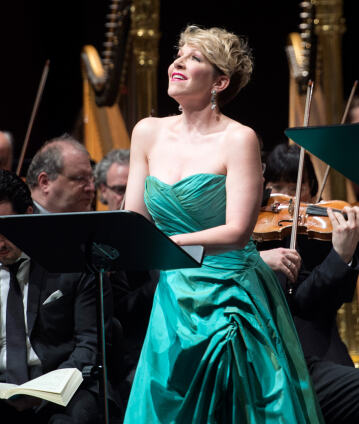“La Damnation de Faust” with Simon Rattle, Joyce DiDonato and Charles Castronovo

La Damnation de Faust is less about the philosophical dimension of the material than about passion, conflicts, and of course the protagonist’s dramatic damnation. With this work, the magician of sound Hector Berlioz created an evocative, imaginary opera, interpreted in our concert by Simon Rattle and two outstanding American singers: Joyce DiDonato as Marguerite and Charles Castronovo as Faust. The role of Mephisto is sung by Ludovic Tézier.
Hector Berlioz wrote his own libretto for La Damnation de Faust, one that in Shakespearean style focuses on the acting players’ passion and grotesque: “I didn’t commit to follow Goethe’s plan.” In the work, which oscillates between being an opera and a choral symphony, Faust seems to be a Byronesque melancholiac for whom nothing remains but the damnation referred to in the title. Berlioz’s compositional imagination was fired not by Faust, but by Marguerite and by the genre scenes such as the student scene, which plays a large role musically. The score turns out to be a veritable treasure trove of characteristic instrumental colours, showing once again that Berlioz (who had completed his famous Grand Traité d’instrumentation et d’orchestration modernes shortly before this) was a brilliant master of the art of instrumentation – for instance, where the often neglected bass register in the brass lend Méphistophélès’s sphere a creepy and sinister tone, or extremely delicate woodwind settings are provided for the ballet numbers.
There is no doubt that the Berliner Philharmoniker conducted by Sir Simon Rattle perform Berlioz’s magical tone colours brilliantly. In addition to the Rundfunkchor Berlin, the singers include mezzo-soprano Joyce DiDonato (Marguerite), who has made a name for herself with an “incomparable, divine voice” (The Times) and impeccable technique, and who debuted with the Philharmoniker in 2012, tenor Charles Castronovo (Faust), who is blessed with splendid high notes, and the lyrical baritone Ludovic Tézier (Méphistophélès).
© 2015 Berlin Phil Media GmbH
Related interviews